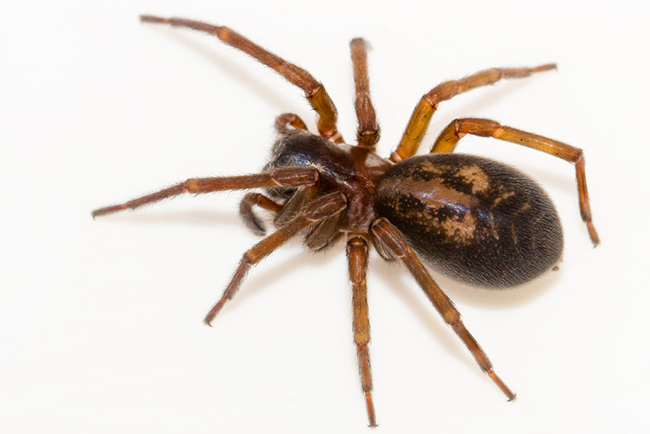Spiders On The Rise

Not good news for all of you with a spider phobia it is that time of year again! September to mid-October is the time that spiders begin entering our homes! Scary fact time! [there are over 650 different species of spiders in the UK] - and all of them bite! Panic over though only 12 of these could physically cause you any harm due to their low levels of venom. Out of these 12 only a few species of spider can even break our skin as their venom is designed for insects and tiny prey!
What About The News Worthy False Widow?
The Steatoda nobilis reported as the UK’s most venomous spider arrived in the UK via cargo around 1879 from Madeira so it is not a native UK pest! The females have been known to bite people, however overall they are not aggressive and attacks are not as common as the news would have you believe. No deaths have been reported to date from a bite from this spider. However symptoms from bites can vary with most reporting that it is similar to the pain from a bee sting others may experience differing symptoms from numbness to more severe swelling.
In serious cases there can be various levels of burning or chest pains, which will depend on the amount of venom injected.
So What Do You Need To Look For?
They have a distinctive bulbous abdomen and measure approx 20mm and brown bodies. (A real widow spider has a jet black body) with a recognisable cream markings that are almost skull like in appearance.
Despite being nocturnal the false widow tends to favour south facing walls. They have a preference for warm dry areas and this is the driver for them entering our homes! Maybe it’s time to move if you are an arachnophobe! (only joking!)
The spiders are most commonly seen in the south of the country, but they have been spotted in more northern regions.
So as frightening as the false widow appears it is by no means the UK‘s biggest arachnid!
The largest in Europe is the Eratigena atrica better known as Giant house spider. It owes its name to its appearance as these spiders are nearly 3 inches!
It is one of the quickest spiders in the world and can run at nearly TWO feet per second! Despite the name, house spiders more commonly live in sheds and gardens! “Most species of spider stay outside all the time and never come in houses. However, in autumn, mature male house spiders start to move around in search of mates. While the females rarely leave their nests, and only then to feed, the males are often spotted from now until October wandering around looking for a mate. The females can lay hundreds of eggs and in each egg sac there can be up to 60 ‘spiderlings’. and these can take 2 years to reach maturity and can survive without food and water for months at a time!
That giant house spider is anything but giant compared to other spiders around the world! Spare a thought for South America; it is here that the largest spider in the world is the Goliath Bird-Eating tarantula lives. The Goliath can reach up to 1-foot in body length and its fangs measure a whopping 1 inch!
Natural pest controllers, spiders will control flies and insect pests around the home and garden so maybe hold fire before grabbing a rolled up news paper! Plus it is thought their webs were inspiration for tinsel on our Christmas trees and that money spiders can make you rich so not all bad then! Maybe keep that in mind next time one scurries across the room and makes you jump!

